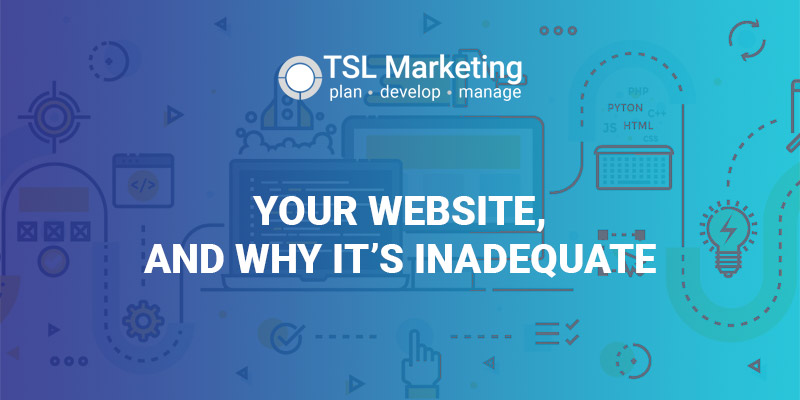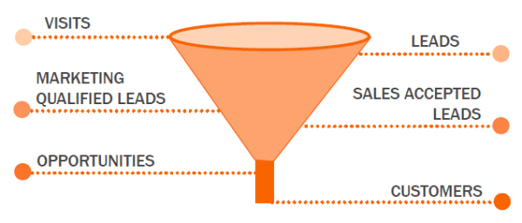Your Website, and Why It’s Inadequate
June 25, 2020

It is time for IT Managed Service Providers to seriously reconsider the role that a website plays in their business growth plan.
This post will introduce a road map toward a destination where customers are acquired via your website. If you are not an influencer or decision-maker at an MSP – or if you have no desire to increase revenue – then feel free to check out other, more relevant content. But if you are, then I encourage you to read on.
The first step on this journey is to understand what your website is, what it should be, and the role it will play in your marketing and sales strategy. So, what does your website look like today? Allow me to guess…
Your site checks all the boxes in terms of professionalism and credibility. It looks clean, and it won’t embarrass your sales team or turn off an applicant. Sections include: Solutions, Services, About Us, and Contact Us. Perhaps a Partner page, Careers section, and a Blog as well. Your reason for WHY your customers love you? YOUR PEOPLE! It’s always “Our People.”
Your site looks similar to most of your competitors’. It doesn’t hurt your business, but it doesn’t differentiate you either. Now for the $4 million dollar question: How many new customers have you generated from website conversions and inquiries in the last 12 months? If the answer is “plenty, thank you!,” then I applaud your efforts and you may proceed with the rest of your day. If the answer is either “none” or “not enough,” then I implore you to continue reading. Consider these four statements that are guaranteed to help you improve digital demand and pipeline generation.
Your website is not for you.
This is a popular misconception that needs to be solved immediately. Your entire company, from the founder to the leadership on down, must understand that your website is a tool to attract visitors, educate prospects, and convert potential customers. It must be built with the user in mind, not based on internal opinions about how you want the site to look. Learn more about agile web development and our agile website methodology here.
Your website must be found.
In order for your business to grow, site traffic cannot be wholly comprised by referrals and “direct” clicks. You are in the services business, which means you solve problems. Your site must appear in search results when your ideal prospects are seeking a solution to their problem. You must rank ahead of competitors and appear prominently on page 1 – whether it be through organic optimization (SEO) or paid search/digital advertising.
Don’t make the user think.
When it comes to web content, more is not necessarily better. Presenting a site visitor with multiple paths to take is not optimal; you should establish a clear call-to-action that will compel the user AND provide value. Figure out your “best offer” and display that conversion point prominently.
Track return on marketing investment (ROMI).
Once your site is found by the right people and those visitors are converting on your offers and CTAs, it is time to utilize the analytics you’re gathering. Establishing an accurate ROMI will allow you to make data-driven decisions moving forward. We advise our customers to work backwards up the sales funnel:
 Image Credit: HubSpot
Image Credit: HubSpot
Step 1 – Formalize your Customer Lifetime Value
Calculate CLV by multiplying the average annual spend of your customers by the typical length of your working relationship. Factor in profitability goals and determine the return you would be comfortable with. This will answer a very important question: How much is a new customer worth to my business?
Step 2 – Determine your Sales Close Rate
Figure out how many truly qualified meetings/opportunities (SQLs) your sales team will need to close one new customer.
Step 3 – Calculate your rate of converting MQLs (form conversions) to SQLs
This may vary based on solution area, vertical, or conversion path. You may have different conversion rates or CLVs for different customer types or solution offerings, so building parallel funnels may be necessary.
Step 4 – Track Bounce Rates
How many visitors to any given page are following the clear conversion path? In other words, how many “right-fit hits” are necessary to convert one new MQL?
Step 5 – Figure Out Traffic Costs
How much will it cost to get the right people to your site? Work with an expert to determine the cost of paid vs. organic traffic and formalize a spend ratio that makes sense for your audience and service offering(s).
You have done the work, you can visualize your marketing and sales funnel, and you can now confidently set budgets for customer acquisition.
When a website goes from static to agile and dynamic, it becomes clear as to where your time and money should go. Create content that aligns with the interests and pain points of your audience. Develop conversion paths that these prospects find compelling. Pay Google to direct intent-based searchers to your bottom-funnel offers and CTAs, while paying LinkedIn to get offers in front of your buyer personas.
Most importantly, invest in an agency and/or SMEs with expertise in both SEO and website UX (User Experience) and CRO (Conversion Rate Optimization). Driving traffic organically and converting visitors efficiently will always be the most profitable approach to digital demand and pipeline generation.
Are you still skeptical or do you want proof that this approach and growth strategy works? Check out our success story where a regional MSP has generated over $4.5M in new MRR business in the last 30 months. Also, please feel free to book some time on my calendar  and I would be happy to perform a complimentary assessment of your website, its overall performance, and how to turn it into a revenue-generating machine!
and I would be happy to perform a complimentary assessment of your website, its overall performance, and how to turn it into a revenue-generating machine!
Take the first step toward tracking your ROMI.
